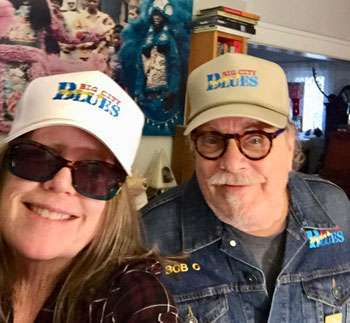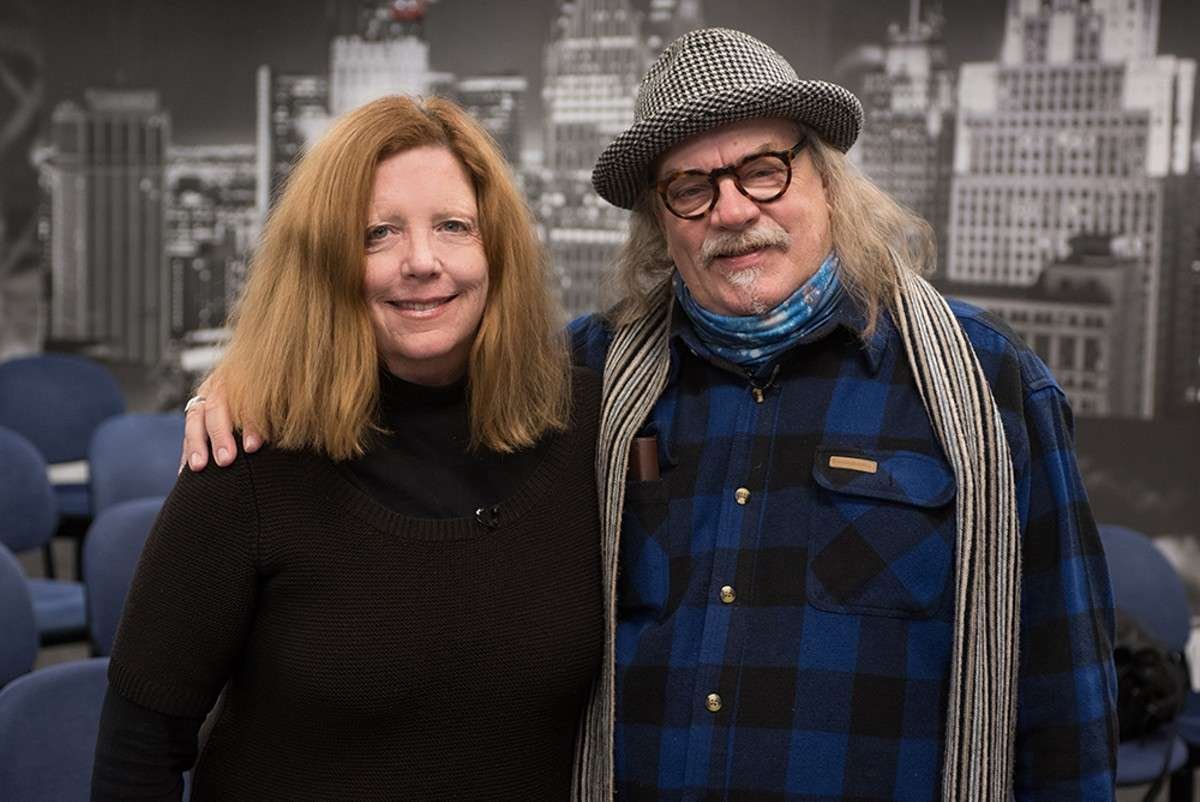Robert Jr. Whitall, April 14, 1948-April 24, 2024
One of the titans of the Detroit and national blues music scene is gone. Robert Jr. Whitall passed away April 25th at the age of 76, after a long illness. He was an acclaimed concert photographer and videographer, artist/painter, music historian and publisher of internationally recognized magazine Big City Rhythm & Blues.
Robert Jr. Whitall (aka “Robert Jr., or simply, “Junior”) was born in Ambler, Pennsylvania and was a direct descendent of the founders of Whitall Tatum, one of the first glass factories in the United States. Whitall’s family relocated to Michigan during his high school years. And during the Vietnam War he served in the Army and, upon an honorable discharge, studied at Eastern Michigan University.
Whitall did so many things for, and to ingratiate himself with, the blues community. He established, first, Detroit Blues Magazine in 1995, with former Creem Magazine founder Charlie Auringer. At the urging of the great Buddy Guy, the focus of the magazine expanded from Detroit and regional coverage to international, and was rebranded to become the esteemed publication it is today.

Both photographer/author Tom Weschler and I, who are writers at Aoide Magazine, have worked for, and with, Whitall on Big City Rhythm & Blues magazine and related endeavors. And we both have fond or colorful recollections of interacting with the vibrant publisher.
“I was on my way to a club called “5th Avenue” in Royal Oak to meet up with J. Chris Newberg (singer-songwriter/comedian) on a Tuesday evening,” recalls Weschler. “He was performing that night at the club. I was with a beautiful girl who was going to pose that night for the cover of J. Chris’ next album. She was not of age to get into the club and the doorman wouldn’t go get Mr. Newberg to vouch for her. At that moment a guy that I had seen before but didn’t know came up to me and said hello. He asked me what was up and I told him about the situation we were in. This guy put his arm around the doorman and whispered something to him. We got in right away. The guy was Robert Jr. Whitall. Later that evening Mr. Whitall introduced himself to me. I knew his sister Susan very well. She was an editor at Creem Magazine. His partner in Big City Rhythm & Blues, Charlie Auringer, was an old friend of mine.”
“A few years later I became involved with a company called ‘Backstage Gallery,’ continues Weschler. “They were in the business of promoting photographers from the entertainment biz. The people who joined this group were going to be interviewed in a very professional way. We, the Detroit contingent of ‘Backstage,’ were scheduled to have our filmed interviews done at a studio in Toledo. So, Gary Grimshaw (poster artist), Omar Newman, Charlie Auringer, myself, Robert Jr. and his wife Sugar, all photo people, got into a huge stretch limo and took off down the road to Ohio. On the way I asked Robert Jr. what he said to the bouncer at 5th Avenue that night. He told me that he said ‘just let them in,’ forcefully. That powerful statement was not the only time Robert Jr. uttered his opinion forcefully. He and I became good friends. And as friends do, we argued occasionally about photographs, music and, of course his favorite subject: The Blues! We got along very well for more than 20 years. I and many others will miss him.”

My [Eric Harabadian] first encounter with Robert Jr. occurred about six or seven years ago when my wife Lisa and I were taping interviews for our Detroit blues documentary “Paradise Boogie.” I was aware of Big City Rhythm & Blues magazine and knew of publishers Robert Jr. and his wife Shirley (“Sugar”) as being aficionados on what was going on in the Metro Detroit blues scene. We were informed through the Motown blues grapevine that Whitall had a famed photo he had taken of a plethora of Detroit blues artists from the early 2000s. The black & white photo depicted practically everybody who was anybody in the Detroit blues world who was still active and performing at that point in time. Thornetta Davis, Howard Glazer, Harmonica Shah, Lazy Lester, Rev. Marc Falconberry, Billy Davis, Johnny “Yarddog” Jones, Bobby Murray, Luther “Badman” Keith, Famous Coachman, Johnnie Bassett, Sir Mack Rice, and a numerous list of others posed in front of the legendary Fortune Records recording studio. Whitall went on to talk about the day of setting up this monumental photo; from contacting all the artists to meet on an early cold December day in 2000, and the seminal blues pianist ‘Uncle” Jessie White being heartbroken for not being able to physically make the shoot, to the heartbreak of finding out the realtor who was set to sell the property to Whitall had the monumental building torn down.
Robert Jr. and his wife regaled us with a plethora of stories like this which, not only endeared us to them, but further demonstrated their love for, not only blues music but, more importantly, the people. After we completed our documentary in 2019, I kept in touch with Whitall and he brought me on as a feature writer and album reviewer. I’ve had many conversations on blues artists and learned a lot about the genre, purely from the publisher setting me up with assignments interviewing some of the biggest names in contemporary blues—personal friends of his, all!

Robert Jr. Whitall is survived by his wife Shirley Mae (“Sugar”) Owens who brings an even deeper well of blues knowledge and pedigree as a music historian and photographer, as previously mentioned, in addition to an extensive background as a music radio host in Kansas City.
Both Owens and graphic designer/webmaster Auringer have vowed to continue keeping the blues alive and carrying on Whitall’s rich legacy, with publishing Big City Rhythm & Blues. Rest in Peace and in Power “Junior,” we’re gonna miss you!
For more information on Robert Jr. Whitall, his artwork and the magazine you can visit www.bigcitybluesmag.com.



